
How to make a flat loaf Plain Bread with yeast – The Accidental Recipe Modified
Saturday 28th May 2011
Recipe 20110528
Why use 100% water when making bread with yeast?
From the results of the last recipe, making bread with yeast, we found out that the 100% water content makes dense bread as the gases generated from the yeast escape from the dough and prevent it from rising any further. The idea behind a 100% water bread was that there was no need to knead the dough and there was no need to use a bread making machine. We will still try to keep to this principle.
Changes to the bread with yeast recipe
This time around I have reduced the water content to 80%, to make bread with yeast, and I have stripped the recipe of everything else so as not to complicate ‘research findings’. It is a plain bread that I am making but you will notice that I have some wheat germ in the recipe. Wheat germ is a good source of vitamin E but the main reason I add wheat germ in all my recipes has nothing to do with flavor but for a practical reason. I bought a kilo of wheat germ many months ago and I have not even finished half of it. If it is on my cupboard shelf for too long it will lose its natural goodness and then I would have wasted it. Hence, that is the reason I have been adding wheat germ everywhere – to finish it before it spoils. Furthermore you will notice I have virgin olive oil and butter in the bread and no virgin coconut oil. I have run out of virgin coconut oil hence it is not included in the recipe. I do need to make some more virgin coconut oil soon… very soon. (see http://bachutha.com/how-to-make-home-made-virgin-coconut-oil-vco/ to make virgin coconut oil)
Plain Bread Recipe
Here is the recipe for a flat loaf plain bread. I had used Brand A flour, the water absorbent flour.
| Item | Ingredients | Percentage | Weight | Weight | |
| (%) | (g) | oz. | |||
| Sponge | |||||
| 1 | Bread Flour | 100 | 600 | 21.12 | |
| 2 | Instant Dry Yeast | 1 | 6 | 0.21 | |
| 3 | Sugar | 10 | 60 | 2.11 | |
| 4 | Water, Cold | 80 | 480 | 16.90 | |
| After 1 hour of fermentation | |||||
| Additives | |||||
| 5 | Salt | 2 | 12 | 0.42 | |
| 6 | Butter | 2 | 12 | 0.42 | |
| 7 | Sugar | 2 | 12 | 0.42 | |
| 8 | Olive Oil | 2 | 12 | 0.42 | |
| 9 | Wheat Germ | 4 | 24 | 0.84 | |
In the first version of the recipe for orange cherry bread muffin cupcake I had mixed everything in one go the butter and yeast and water and flour and …. I noticed that the sponge or dough would not rise even after two hours. I didn’t write about it as, that day was one of those days when nothing works out right. I spilt a whole tray of orange cherry dough all over the oven door and the floor as I was trying to put two trays in for baking. That was the reason I had not mentioned it before.
The lesson I learnt from that experiment was that yeast could not tolerate a high amount of oils or fats in the dough. I suspect that there was sufficient butter in the dough, 20% butter, to block the yeast from growing and consuming the sugar. I wouldn’t be surprised if the butter had wrapped around the yeast granules and sealing of the yeast from the water in the dough. Hence, as the yeast did not detect any moisture and it would not activate, grow and consume the sugar.
Bread with yeast recipes are done in two stages
This is the reason many bread with yeast recipes are done in two stages. The first stage, the sponge stage where the sponge is allowed to ferment and thereby multiplying the amount of yeast present in the sponge. The second stage is where all the other stuff is added in like oils, fats … etc that may retard the growth of the yeast.
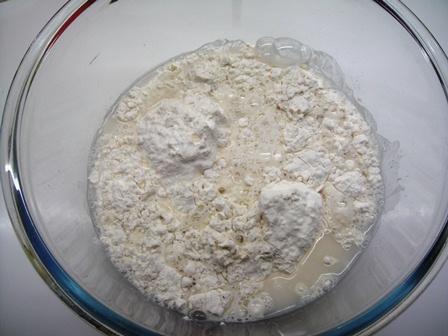
Add all the ingredients for the sponge – the first stage of bread with yeast recipe.
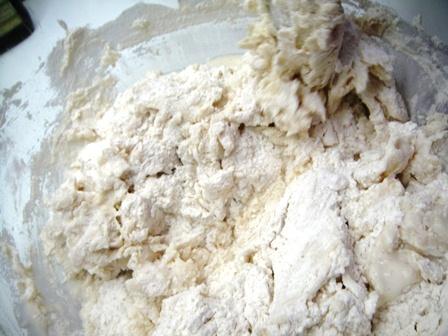
Fold in the mixture on itself. Can you observe the water absorbed into the flour? The water is in the flour.
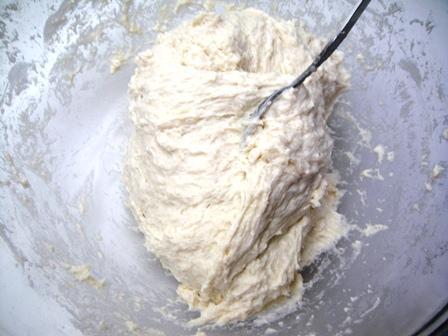
I mixed it well to get the gluten formation going. It does become gluey sort of sponge. I am using a small spoon to gauge how difficult this mixing process is. You could use a large spoon or a stiff spatula to mix as it would be much easier to mix. Here you can observe that the water is being released from the flour. The flour is in the water.
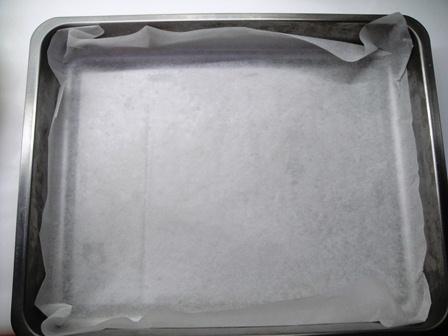
Prepare the baking tray while the sponge is allowed to ferment for one hour. I am using baking paper to line the bottom of the tray so that I will not have any difficulty remove the bread from the tray once baked.
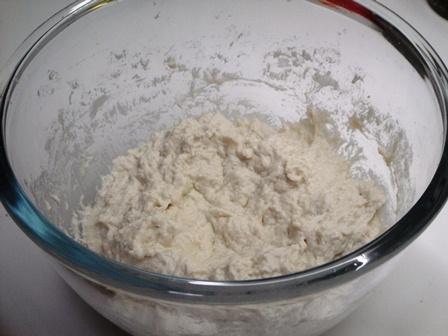
Allow the sponge to ferment for an hour. That is to allow a lot of yeast to be generated within the sponge. If yeast reproduces every twenty minutes then after an hour there should be 6gx2x2x2 (three blocks of twenty minutes) which means 48g dry weight or 8 times more yeast in the sponge.
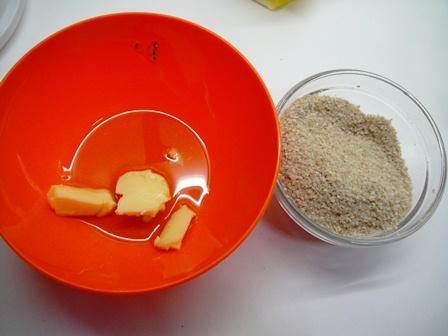
Prepare all the additives and mix the oils and fats separately and mix the other dry additives separately for uniform dispersion.
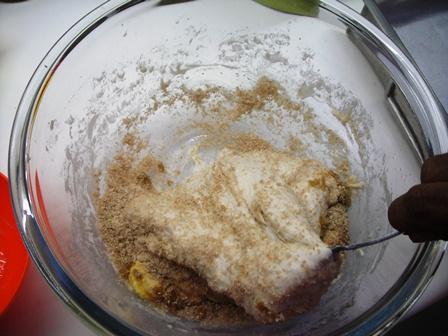
After an hour of fermentation fold in all the additives.
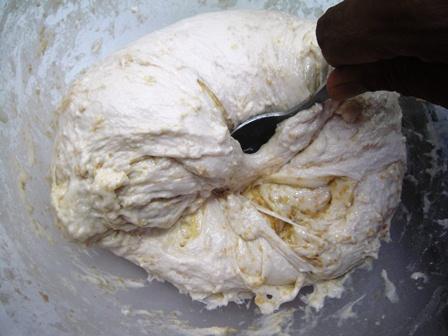
Keep folding.
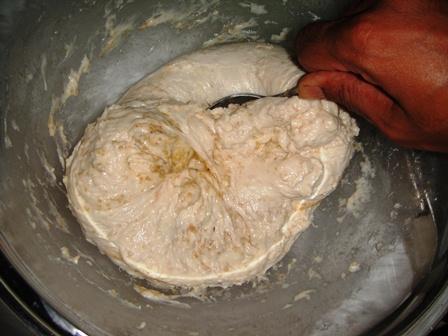
Keep folding until it looks as if it is well mixed.
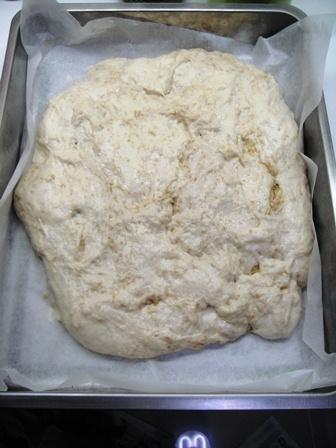
I spread the plain bread dough on the tray and left it to proof for another three hours. I think I should have left it to proof for 4 hours – or until all the sugar was consumed.
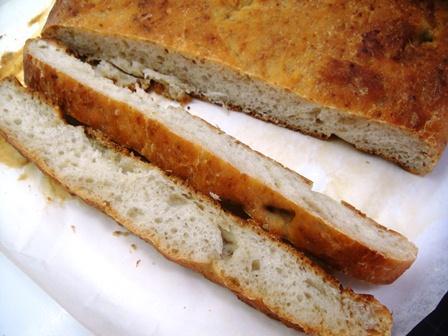
The baked plain bread does look pretty good, doesn’t it?
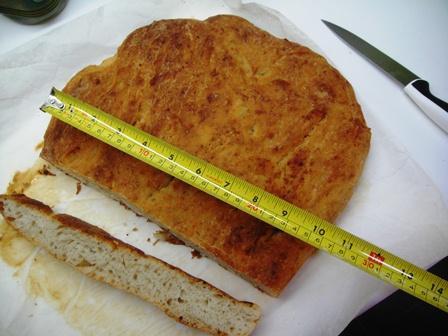
Just to show you how big this flat loaf was.
I had baked this plain bread for an hour at 185C (365F) as I was not sure if it would burn at the edges like the orange cherry cupcakes. The bread was mildly raw to taste. Next time I plan to bake it at 210C (410F).
It looks good and does rise quite well. So we have solved the rising problem for baking bread with yeast – use less water. This recipe needs some adjustments. The bread was slightly salty to taste, initially, and this is because I used 2% salt. I had been making wholemeal bread for quite a while and had forgotten that plain bread does not need that much salt. Plain bread will taste good with about 1% to 1.5% salt. Furthermore this bread was slightly sweet. I should not have added the extra 2% sugar in the additives. I was worried it would not rise and for that reason had added the extra 2% sugar for the yeast to feed on. The sweetness showed that the yeast did not have enough time to consume the extra sugar. Yeast would have consumed most of the sugar in the bread if I had allowed the bread to proof for 4 hours or until it stopped rising.
This slightly sweet bread was good when dunked in hot coffee or dipped in hot curry; otherwise it was too sweet for my taste. I will redo the recipe with the changes I have mentioned then we will know how truly good plain bread can be.
Making flat loaf plain bread with yeast explanation
I must tell you that I called this a flat loaf and not a flat bread as flat bread is used to describe unleavened bread like chapatti or atta roti (atta means wheat and roti means bread). One day I will show you how to make chapatti as I used to make it at home when I was a kid.
Do you know where I am going with making flat loaf plain bread with yeast?
Leave a Reply